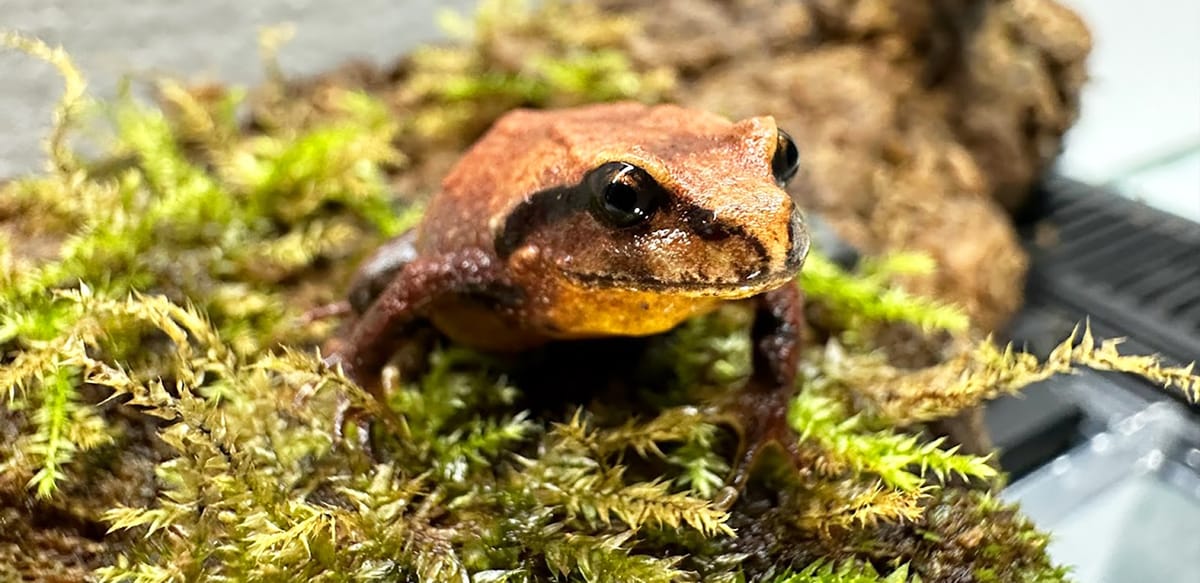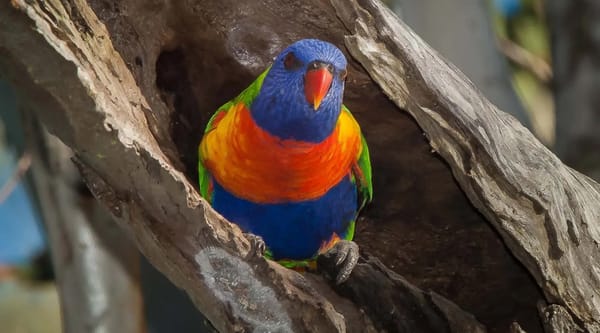Mountain frog breeding and release program leaps ahead with federal funding
A $500,000 grant will boost a Southern Cross University project to breed and reintroduce a rare Gondwanan rainforest frog back into its natural habitat.

First published on Southern Cross University
A $500,000 grant will boost a Southern Cross University project to breed and reintroduce a rare Gondwanan rainforest frog back into its natural habitat.
The endangered Mountain frog (Philoria kundagungan) faces extinction from climate change and introduced species, particularly pigs, in its increasingly shrinking and isolated ‘sky island’ home within the Gondwana World Heritage listed national parks of northern New South Wales and southeast Queensland.
Led by Associate Professor David Newell, the ‘Saving the mountain frog from extinction in a changing climate’ project has received grant funding worth $499,993 from the Australian Government Saving Native Species Program.
“These frogs are incredibly slow-growing and take up to four years to reach sexual maturity, so it’s vital we’ve received this support from the Commonwealth to continue our work.”
/prod01/channel_8/media/scu-dep/news/images/2024/Project_Grasp_David_Newell_Credit_Shannon_Greenfields_DPE-low-res.JPG)
In making the announcement on the International Day of Biological Diversity, the Federal Environment Minister Tanya Plibersek acknowledged the efforts of Dr Newell and others.
“This funding is about supporting the dedicated scientists, conservationists, and passionate local community groups right across Australia who are working hard to save our precious native plants and animals,” said Ms Plibersek.
Associate Professor David Newell has established purpose-built breeding facilities located on Southern Cross University’s Northern Rivers campus.
“The funds will support our continued efforts to save the endangered Mountain frog (Philoria kundagungan) from extinction. We are breeding mountain frogs in a dedicated animal facility named Project GRASP,” said Dr Newell.
“Despite their habitats being well-protected within World Heritage listed National Parks, the frogs are increasingly threatened through climate change and pigs. The drought and subsequent Black Summer fires have resulted in localised extinction of populations.”
/prod01/channel_8/media/scu-dep/news/images/2024/Mountain-frog-Philoria-kundagungan-lays-eggs-IMG_5691_credit-Liam-Bolitho-low-res-copy.jpg)
Dr Newell and his team are working closely with National Parks staff from NSW and Queensland to protect remaining areas of habitat. Philoria kundagungan occupies headwater streams on mountain summits of the Gondwana rainforest. These frogs are effectively stranded on ‘islands in the sky’.
“With existing support from the NSW Government’s Saving Our Species program and WWF Rewilding Australia, we have successfully managed to breed frogs in the facility — a world first! — and hope to undertake our first releases into a predator-free areas later this year,” said Dr Newell.
“These frogs are incredibly slow-growing and take up to four years to reach sexual maturity, so it’s vital we’ve received this support from the Commonwealth to continue our work.”
/prod01/channel_8/media/scu-dep/news/images/2024/Islands-in-the-sky-concept-diagram-credit-Sophy-Millard_low-res.jpg)
Mountain frogs are small, about 30mm in length, and spend most of their lives underground. The University’s amphibian research team uses frog calls to find them and acoustic recorders to monitor populations remotely.
“The funds will allow us to purchase and deploy additional audio recorders for our field sites,” said Research Fellow Dr Liam Bolitho.
“These devices are used to collect thousands of hours of sound recordings that we analyse using machine learning (AI) approaches in order to monitor if our releases are successful.”
Mountain tops form what scientists call ‘sky islands’ or ‘islands in the sky’: little pockets of distinctive habitat that animals adapt to; in this case, cool, high-elevation rainforests with very high rainfall. Each mountain top is separated from another by a ‘sea’ of lower-altitude habitat that is unsuitable for mountain frogs.
The genus Philoria has evolved over millions of years with the isolation of these forests and frogs are threatened because of their small ranges and specialised habitat needs.
Alongside husbandry efforts, the most important conservation action for this species is to maintain the condition of their current habitat. Predicted lifting of the cloud base under climate change, increases in frequency and intensity of droughts, heatwaves and severe fires are likely to severely impact habitat suitability.
Learn more
Project GRASP www.scu.edu.au/grasp/
Extensive range contraction predicted under climate warming for two endangered mountaintop frogs from the rainforests of subtropical Australia published in Scientific Reports
Habitat loss for the mountain frogs under a changing climate: interactive story map




